- Home Page
- Better Kites
- ... Sode Kite
How to Build a Sode Kite
Step by Step—Page 1 of 3
The MBK 2-Skewer Sode
This set of instructions on how to build a sode kite assumes you know absolutely nothing about kite making. You might already have some of the simple tools and materials required.
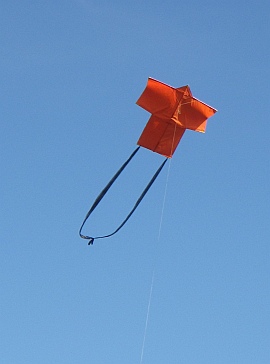 MBK 2-Skewer Sode
MBK 2-Skewer SodeAnything you don't have is easily bought. If it's not exactly what I used, then at least something pretty similar!
The MBK 2-Skewer Sode kite is a medium-sized sode 58 cm (23 in.) across and a little more than that in height.
The dihedral on both the horizontal spars provides some stability. However, this design also requires a short looped tail. Two slightly longer separate tails would also work nicely.
The three-leg bridle allows the lower horizontal spar to bend a little more when the wind picks up, giving a bit more stability when needed. The kite straightens out and stops bobbing from side to side.
The 2-Skewer Sode does well in quite light winds and is not bothered by a bit of rough air.
On this site, there's more kite-making info than you can poke a stick at. :-)
Want to know the most convenient way of using it all?
The Big MBK E-book Bundle is a collection of downloads—printable PDF files which provide step-by-step instructions for many kites large and small.
That's every kite in every MBK series.
How to Build a Sode Kite
Sail
Now's the time to read up on the tools and materials required for making a skewer kite, if you haven't already.
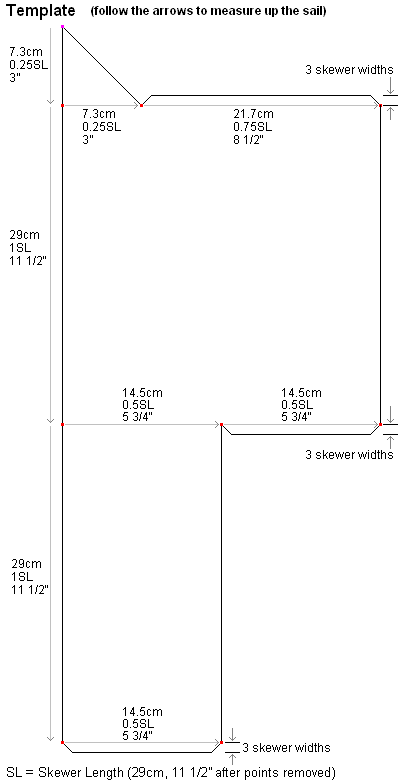
The template shown above represents one side of the kite sail. You will now transfer these measurements to the sail plastic.
Like to see a video clip? Just scroll down to near the end of this page.
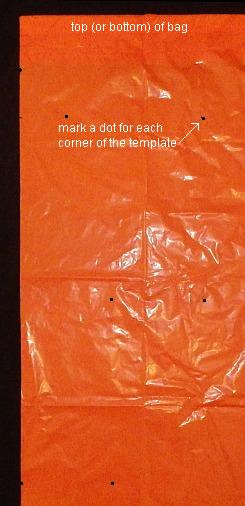
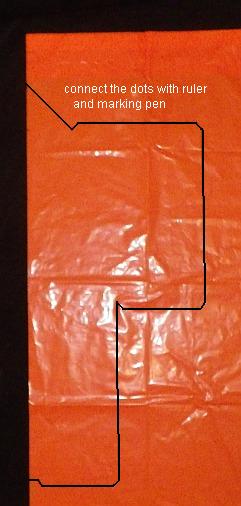
- Take a light plastic bag that will fit the entire template shape within one side, and lay it flat on the floor.
- Mark dots on the plastic, corresponding to the corners of the template. There is no need to use a T-square, since any small error will be duplicated on the other side of the sail. And it will make hardly any difference to how the kite flies.
- Using the marking pen, rule lines between the dots to create the template shape.
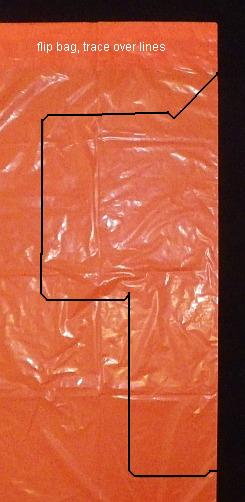
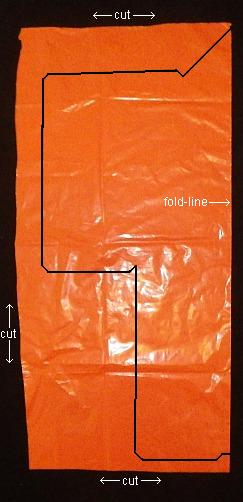
- Flip the plastic bag over, and trace over all the black lines using your marker pen and ruler.
- Cut out a rectangular section of the bag containing the kite sail.
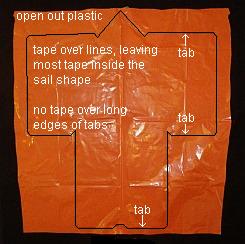
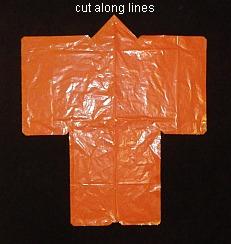
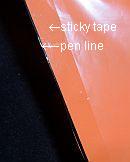
- Open the bag out, and lay it flat on the floor; you can now see the complete sail outline as in the first photo.
- Run clear sticky tape along every straight line, leaving most of the tape on the inside of the sail edges. Don't tape the long edges of the tabs. This will help to save weight.
- Cut along the black lines with scissors to create the sail. See the closeup photo.
As mentioned earlier, there's more kite making on this site than you can poke a stick at. :-)
Want to know the most convenient way of using it all?
The Big MBK E-book Bundle is a collection of downloads—printable PDF files which provide step-by-step instructions for many kites large and small.
That's every kite in every MBK series.
